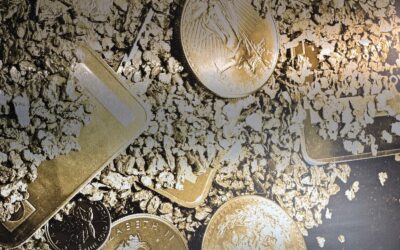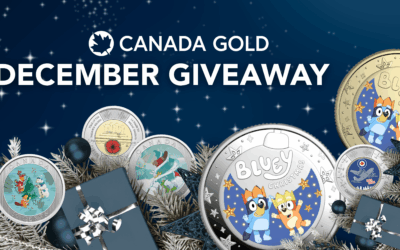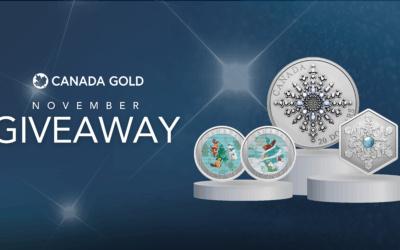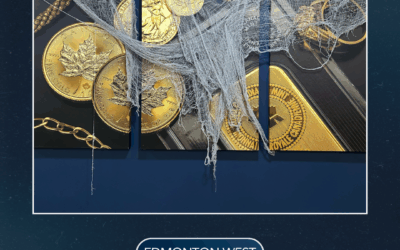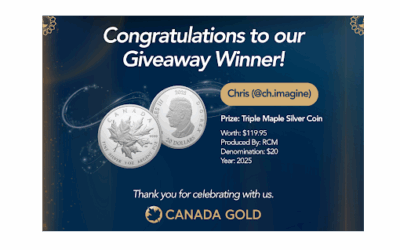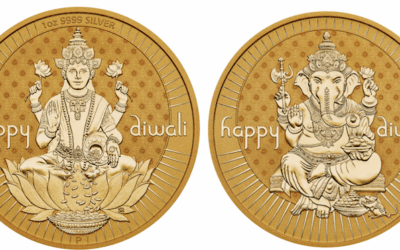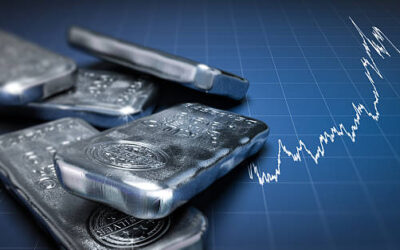Canada Gold Blog
Celebrating the Holidays with Canada Gold
The holiday season is a time for giving, reflection, and celebrating what matters most. At Canada Gold, December is one of our favourite times of year because it brings together community, tradition, and meaningful moments. This season, we are celebrating with festive...
Understanding the Value of Starting Early with Precious Metals
Learning about precious metals early in your financial journey can help you make informed decisions about long-term financial planning. Whether you’re saving for the future, curious about gold and silver, or simply exploring how tangible assets fit into the broader...
Canada Gold’s December Giveaway
Canada Gold is keeping the holiday spirit going with another exciting giveaway, this time with six beautifully crafted holiday collectibles. From charming Bluey Christmas releases to festive lenticular designs and meaningful commemorative keepsake cards, our December...
Canada Gold’s November Giveaway
A Chance to Win Stunning Royal Canadian Mint Collectibles November just became a lot more exciting for coin collectors, gift givers, and precious metal enthusiasts across Canada. Canada Gold is thrilled to launch our November Giveaway, offering four exceptional Royal...
Customer Success Story: Feanshu & Keerat’s Story of Smart Saving and Trust
For many newcomers to Canada, building a secure financial foundation and achieving milestones like home ownership can take years of hard work, planning, and perseverance. For Feanshu and Keerat, that dream became reality. Thanks to determination, smart financial...
Canada Gold’s First-Ever Colouring Contest at the Coin Exchange with The Royal Canadian Mint
Coin collecting just got a little more colourful! For the first time ever, the Canada Gold Coin Exchange welcomed families with a fun new addition, a Colouring Contest for kids. Held on September 26 - 27, 2025 at Canada Gold Hamilton, the event was part of a special...
Halloween at Canada Gold
At Canada Gold, teamwork shines as brightly as the gold and silver we handle every day, and this Halloween, our teams proved that creativity is just as much a part of who we are. Even with a busy season brought on by rising gold and silver prices, our staff from...
Celebrating Diwali with Canada Gold: Sharing Light, Luck, and Silver
Canada Gold joined in the celebration of Diwali: the Festival of Lights, by spreading joy and good fortune. To mark this special occasion, we launched our first-ever Diwali Giveaway, inviting our community to celebrate with us online through Instagram and Facebook....
Diwali: A Festival of Lights
Diwali: A Celebration of Light, Love, and Little Joys As the air cools and nights lengthen, residences globally begin to shimmer with festive lights, joyous sounds, and the aroma of cardamom and ghee. It is once again that enchanting period—Diwali. Whether one has...
Event Recap: Hamilton Coin Exchange
Canada Gold is proud to be an authorized distributor of the Royal Canadian Mint (RCM). Given we just opened a new Canada Gold location at the Centre on Barton in Hamilton, Ontario, it was perfect timing to host a coin exchange with the RCM. The event, which took place...
Silver Soars to Unprecedented Highs in Canada
2025 continues to be a banner year for precious metals. While gold continues its steady rise given its reputation as a safe haven investment, silver’s recent rally has caught many by surprise. With silver officially reaching all-time highs, it represents a pivotal...
Begin Again: A Vintage Watch Fob Finds Its Next Chapter
When the Whole Place Shimmers Every so often, a piece of vintage jewellery steps out of the past and into the spotlight and reminds us why we do what we do. This week, fans noticed a one-of-a-kind classic watch fob chain styled as a necklace on the world’s most famous...

